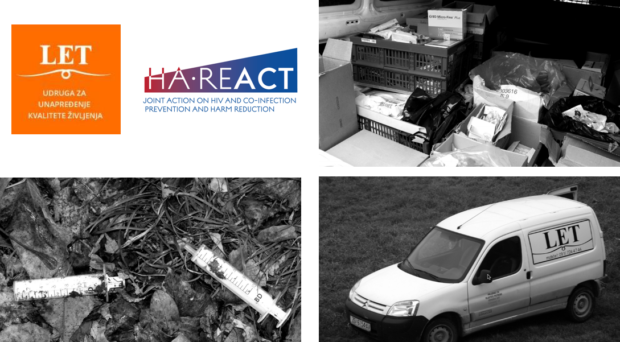
Tell me a bit about LET and its involvement with harm reduction in Croatia
Since Zagreb is so large and some clients never leave their neighborhoods, we have to be mobile to offer everyone access
LET [known as “FLIGHT” in English] was established in 2002, and in 2003 we started offering harm reduction to people who use drugs and sex workers. Today, our outreach workers are in direct contact with more than 200 street sex workers, while for people who use drugs, we use two mobile outreach units. Most Croatian NGOs focus on drop-in centres, but since Zagreb is so large and some clients never leave their neighborhoods, we have to be mobile to offer everyone access. Clients contact us by phone or text, and we bring needles and syringes right to them – a kind of takeout service that we’ve provided since the very beginning.
How did your financing change when Croatia was no longer eligible for Global Fund grants?
We managed to retain all four of our employees. The Global Fund money had procured two vehicles for us, which we still rely on. They’re 13-14 years old now and need to be replaced, but I don’t know how we’re going to do that.
The Ministry of Health has tried to ensure that harm reduction programs continue as before; the level of funding hasn’t allowed any expansion. So they provide money for harm reduction supplies: needles, syringes, condoms, etc. The LET budget has shrunk, but we’ve been able to continue almost everything we did under the Global Fund except for the youth health education service, which was formerly our biggest programme.
Croatia has many funding sources for harm reduction, and the Ministry of Health helps NGOs apply to as many as possible. We also receive some EU money from joint actions, so we’ve been able to patch something together.
Our major challenge is the long delays in government funding – often more than six months. We receive 90% of our financing from the Ministry of Health, but we typically don’t get the annual signed contract until April, and disbursements two months afterward. Somehow we have to survive in the meantime, but we can’t stop delivering services without breaching our contract.
For the type of clientele we have, we have to be always available, otherwise we’ll lose them
For the type of clientele we have, we have to be always available, otherwise we’ll lose them. So there’s tremendous pressure to find other funding sources to cover the delays. That means we focus a lot on just covering the gap at the start of the year. I often take out personal loans just so I can pay our staff salaries until the money comes through.
What has proven most important in securing harm-reduction funding?
For the ministry funding, it’s key to maintain good collaborative relationships with the technical staff, who have been with the ministry for 10-20 years. They’ve been in the field with us and know how we work.
The problem lies with the political changes at the top of the government hierarchy. The technical staff draw up the documents and makes the initial decisions, but then they lie on the minister’s desk for months because he has to sign some other things. Not that he doesn’t want to sign our contracts…
We don’t use the media or organize public demonstrations; instead, we lobby technical staff and officials in the ministry and the relevant commissions
In Croatia, the HIV NGOs try not to make too much noise. We’re a strongly Catholic country, and the constitution defines marriage as being between a man and a woman. So, we don’t use the media or organize public demonstrations; instead, we lobby technical staff and officials in the ministry and the relevant commissions.
Any funding sources you think are being overlooked for harm reduction?
Yes, the EU structural funds. The European Social Fund has a certain amount of funding for public health prevention programs, though last year the Ministry of Health didn’t call for proposals because of national elections. So the money was there but we couldn’t access it.
In addition, the last tranche of EU funds is disbursed only upon delivery of the final report. In Croatia, some ministries take up to a year to transfer the final 20% of the funding from the EU to the programmes to which it has been awarded.
All this funding uncertainty means it takes a lot of energy to keep staff morale up and our programmes running without interruption
All this funding uncertainty means it takes a lot of energy to keep staff morale up and our programmes running without interruption. Fortunately, coordinators from the different NGOs are in constant contact and support each other. If one organization runs out of needles, another will supply them. But we talk about leaving the field sometimes, and the stress has made some outreach workers quit and caused some NGOs to finally succumb and close their doors.
LET publications for download (primarily in Croatian)
Comments